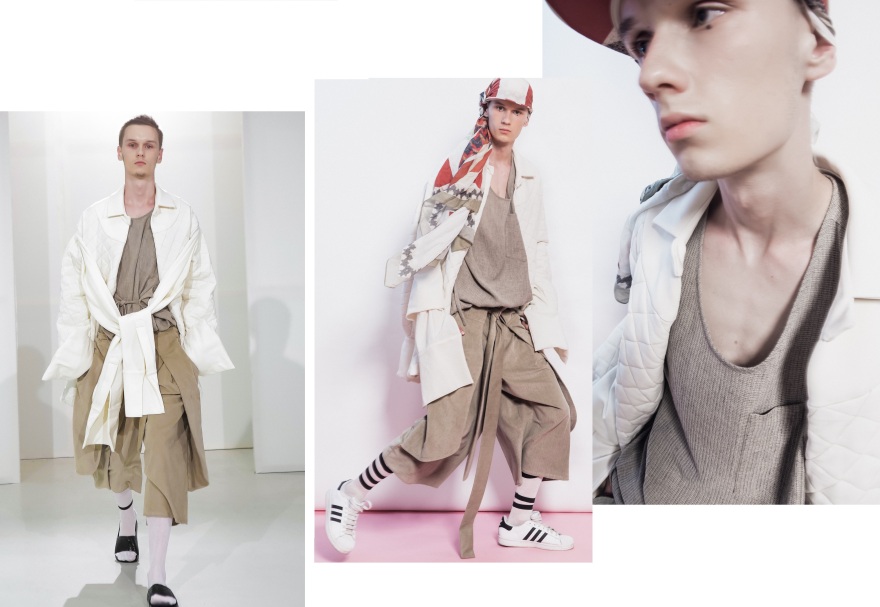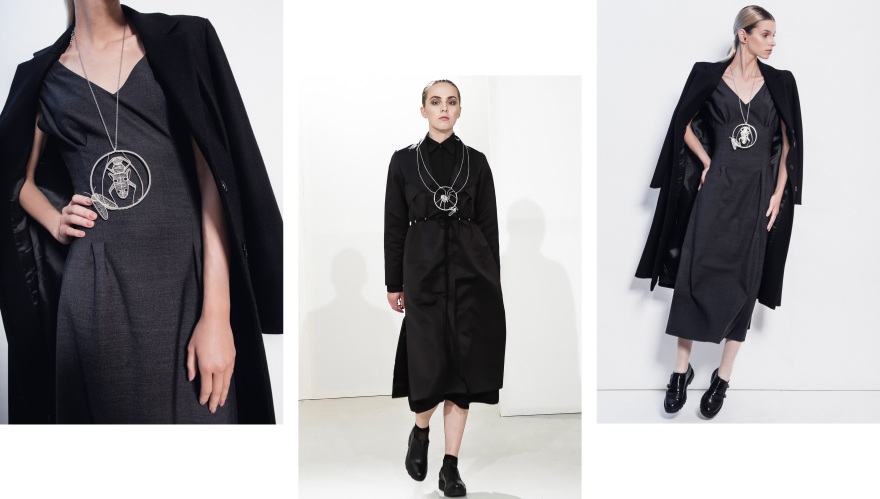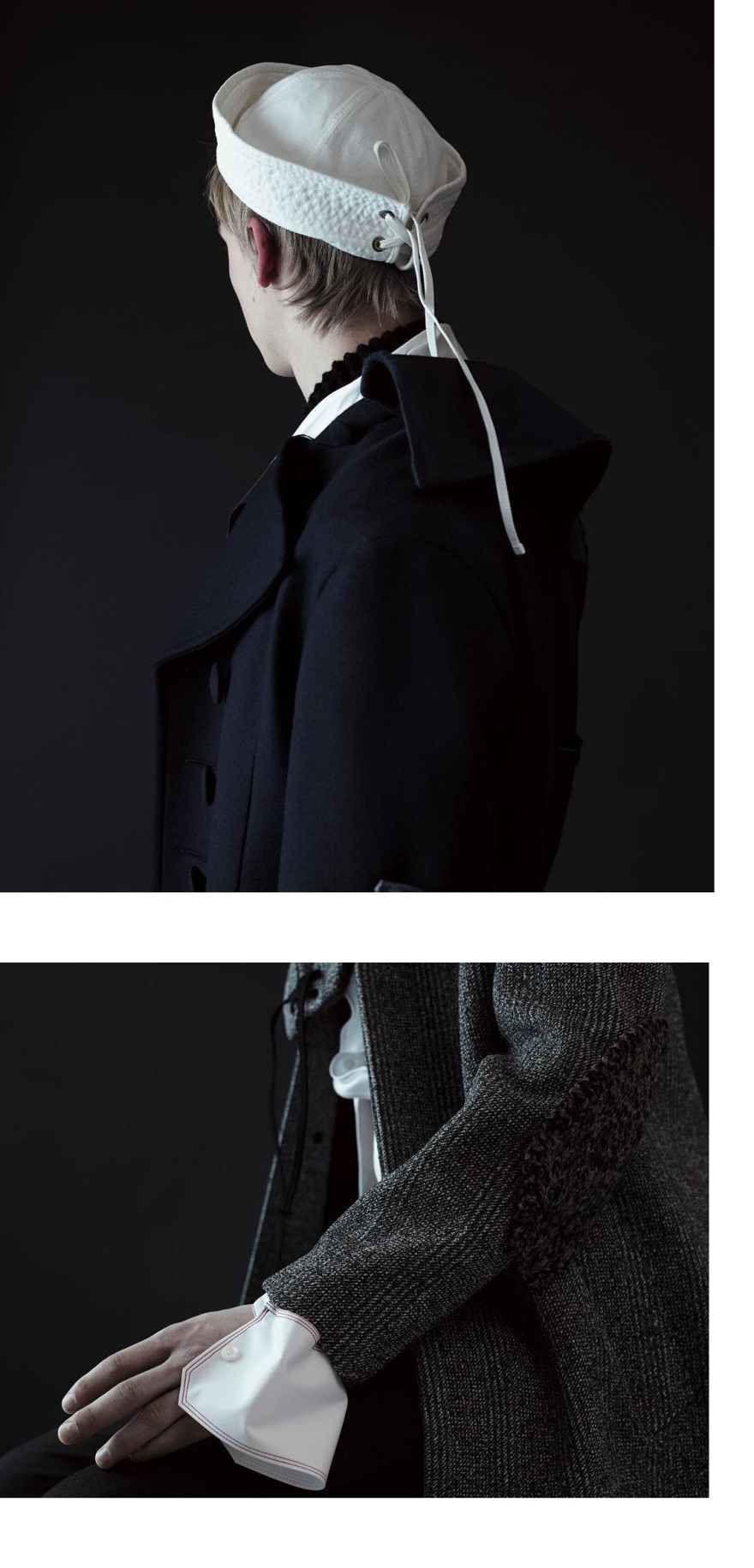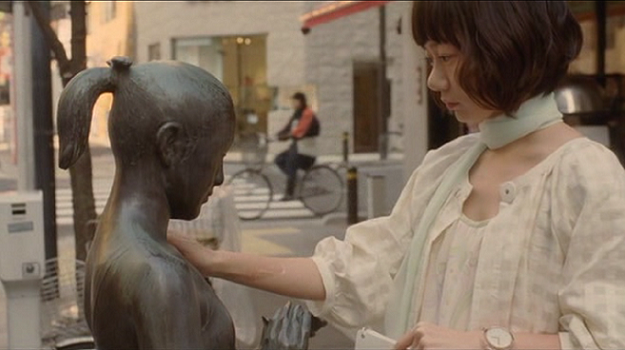Over the years The UAD Gala has established itself as a platform whose aim is to promote young graduates of the UAD Department of Fashion Design. Through the graduates’ fashion show, which involves very complex logistics, innovative collections are presented to specialists and representatives of the creative industries. The collections always try to be relevant for the 21st century fashion landscape, through themes that are focused on specific issues of contemporary lifestyle, a thorough study of volumetries and clothing morphologies generating novel interventions on textile surfaces, the relationship between body and garment, and an elaborate styling.
The implication of the Department of Fashion Design in the educational process of their students is rewarded by their professional achievements. Thanks to scholarship programs, the UAD students were able to apply and be accepted in internships at international brands such as: Ann Demeulemeester, Craig Green, Ann Sophie BACK, Nasir Mazhar, BLESS, Erdem, Marios Schwab, Meadham Kirchhoff, Barbara i Gongini, Ashish, Michael Sontag, HAAL, H&M. Two of last year’s Gala graduates have obtained important results: Andreea Castrase now works for the department of creation at H&M, and Ancuta Sarca was one of the finalists of the international competition, Designer for Tomorrow.
This year’s collections were living proof of the educational and professional development that takes place within the Department of Fashion Design. With the didactical support of Elena Basso Stanescu, Lucian Broscatean, and Anca Pia Rusan, the students designed versatile, functional, and modern collections. There were collections that stood out immediately, and collections that were more subtle in their artistic approach. But each and every one of the 27 collections had something particular, something creative, and personal. The 10 collections I chose to analyze represented, for me personally, aspects of the fashion universe that interest me. The way they were portrayed in these collections offered me the chance to explore those aspects from a different perspective.
RAMONA MANGHIUC
Ramona finds inspiration in Romania’s recent past, and delivers a collection that is nostalgic in a playful manner. During the communist years, the uniform played an important part in people’s lives. From kindergarten, until employment, the uniform gave its wearer a social identity. Ramona Manghiuc reinvents the notion of the uniform by playing with its characteristics. She uses simple shapes, primary colors (referencing the colors of the Romanian flag) in order to orchestrate contemporary ensembles that revolt against an oppressive system, whose days are over, but whose cultural repercussions are still present. The styling of the collection uses symbols of bravery, badges of honor which she transforms in simple embellishments, esthetical objects without any historical meaning for those that did not live during the communist years. Even the title of the collection speaks of a loss of meaning, a blissful historical amnesia: Ceau, an abbreviation of the fearful communist leader’s name, becomes a cordial form of greeting.

BOGDAN DRUTA
Bogdan Druta’s revolt is also connected to the idea of identity, but in his case it is a physical, not a social one. He seeks freedom in constraint, acceptance in discrimination, vulnerability in intolerance. The designer’s unisex rendering of shapes reveals his desire to blur the physical boundaries between sexes. The garment’s earthly tones represent his visual statement against contrasts. His protest is a subtle one, but his clothes are powerful enough the stand alone.

LILIANA TIMIS
The road to self-discovery is paved with ambiguity. Liliana Timis invites us on her personal journey of identitary exploration. Her monochromatic visual composition is an introspect reflection on the concepts of androgyny, identity, and the ambiguity of such concepts. The rigid surfaces of the black garments are invaded by unexpected transparences. The play on surfaces and textures is sometimes intriguing, and the consistent styling communicates harmoniously with the musical arrangement of the collection, Bernard Herrmann’s composition for Hitchcock’s Psycho.

ADRIANA TIMOFTI
One has to re-tie the knots with tradition from time to time, and Adriana Timofti felt this need, so she transformed it into a subtle reinterpretation of ethnicity through her collection. By using traditional symbols, she designed well-tailored minimal pieces that evoke an archaic world in such a way that it looks contemporary. Her combination of different textures, bound by zippers, and accessorized with geometric- shaped designer objects seemed to be a smart approach to the symbolic signification of the knot.

NICOLETA BOTNARU
The auditive enhancer that first caught my attention, a track from Kubrick’s Eyes Wide Shut soundtrack, was part of Nicoleta’s device to lure us into a world of utopia, decadence, narcissism, and illusions, a world that might seem a little too similar to the world of fashion. Her well-tailored garments are not simple pieces of clothing, but personal statements of opulence and social status. They are revealing the body, but are protecting the wearer by communicating her belonging to a privileged group. Though the intangibility is only a mask, the frailty of what’s behind it is always intriguing.

ANA MARIA PUT
Anamaria Put delivered a clean and functional collection, composed of desirable modern pieces. The woman who would wear her designs, her future client, surely is someone who knows who she is, she wants her clothes to be versatile, and offer her freedom of movement. She likes her clothes to be subtle in order to enhance her personal aura of mystery. She is a traveler, collecting new meanings in each journey she takes, as her clothes do.

CARLA PUT
An “all black” collection is mistakenly considered by some as something easy and safe. A monochromatic collection can become repetitive, boring and pretentious really fast. But not Carla’s collection. Her non-color statement is emotional, bearing something eerie within it. The smartly placed brooches, and necklaces makes one think of ritualic objects which, if positioned accordingly, have the ability to offer access to its wearer into an imaginary space, a supernatural realm where the conscious intertwines with the subconscious. But despite this visual metaphor, the clothes are strong enough to function on their own. They are well tailored, wearable, and functional.

LUIS DRAJAN
In our present times, the existence of subcultures is a subject up for debate. The short life of trends, the uncontrollable desire for what’s new, and a predisposition for scrolling through social groups makes the process of consolidating a subculture almost impossible. If today’s culture is focused on individuality, then maybe the subculture that derives from it is that of an individualism of excesses. Its members are those who cultivate a lifestyle of hedonistic excesses. Their weapon of choice is narcissism. Luis Drajan’s collection offers us a glimpse into such a subculture. The clothes that he designs may well function as uniforms for the sympathizers of a radical narcissism. Always ready for party, seeking attention through self-irony, they prefer to detach themselves from reality and live their augmented lives within online social platform. The “nostril bleeders” as the designer nicknames them are aware of their addiction, and because they expose it in such a detached manner, they make us uncomfortable, and question our own hidden addictions.

SABINA POP
Sabina Pop’s collection is inspired by women who have influenced the art world. Artists such as Judith Chicago, Louise Bourgeois, and Vanessa Beecroft were her muses, their art functioning as background for Sabina’s exploration of the idea of emancipation. Throughout her collection she experiments with different patterns, textures, in a colorful juxtaposition. The woman she envisions finds liberation in reappropriation. The way she uses color blocks and geometries communicates, at a visual level, the daring nature of the wearer and her preference for a modern wardrobe. Like her muses, who succeeded in liberating themselves through their art, Sabina offers us the possibility to dare and experiment with our wardrobein a liberating manner.

EMESE BAKO
Like your favorite scene from a movie, or a song that you like so much you play it on repeat for two days, a memorable fashion collection haunts you. It sticks to your retina and travels with you until it becomes a memory, and a benchmark for future aesthetical references. But like memory, fashion can sometimes play tricks on you. Because it is such a powerfully visual medium, in many cases the image can be more powerful than the message, but not in the case of Emese Bako’s collection. Her inspiration comes from the idea that “attitude becomes form”. Her aesthetical analysis of this idea becomes an in-depth exploration of the transformation of concept into object. For her, fashion is a trickster, the crystal embellishments she applies on the garments play with our perception, their movement and sparkle seduce us, and trigger our imagination. The purple velvet used in some of the pieces induces a dreaming state, and the shiny surfaces, elegantly reveal the transparencies. Her understanding of fashion is mature because her designs are not artistic experimentation with form; they are functional objects of desire. Together with the styling of the collection and the haunting soundtrack (Skeeter Davis – The End of the World), Emese Bako’s collection truly stands out.

Our present is governed by rupture. It exists in the enormous differences between social classes, in financial inequalities between countries, in the way media communicates different events, in the way we communicate with each other. Current socio-political events force us to find ways of escaping reality, hoping that this way all that’s bad will go away. But nothing good can ever come out of such an approach. What we can do is find ways of fighting against these ruptured times. Together, with their own means, within the walls of the University of Art and Design from Cluj-Napoca, the department of Fashion Design, composed of students and their professors managed to find the perfect “weapon” for fighting against troubled times: creativity. Fashion is not a secluded domain; it does not rely on solitary elements, it is dependent on communication, collaboration, and interdisciplinarity. It may not solve diplomatic conflicts (although I’m sure that it helps in some ways), or stop world hunger, but it will keep on asking questions and try finding answers through creativity.
Photo credit: Emil Costrut, powered by QSmile, Claudia Corega













































 TO BE CONTINUED
TO BE CONTINUED






























































































































